Infrastructure Considerations for Your Next-Gen Archive: Forrester Webinar Recap
We recently held a webinar hosted by Robert Cruz, Vice President, Information Governance Solutions at Smarsh, with guest presenter Cheryl McKinnon, Principal Analyst at Forrester Research, to discuss infrastructure considerations for a next generation communications archive. They talked about the new wave of cloud capabilities—public cloud options like Amazon Web Services and Microsoft Azure, and multi-cloud architectures like the one upon which the Enterprise Archive at Smarsh is built.
Modern cloud infrastructures support modern archiving—defined by qualities like dynamic scaling to handle volume and variety of communications data; fast throughput for managing ingestion, indexing & search; and context-aware playback to understand the relationship among messages and conversation events.
There is inherent business value that must be explored through next generation cloud solutions. Businesses that capture and archive all varieties of today’s communication methods can use that information to gain efficiency, manage scale & security, and adjust to future needs. According to research from the Forrester team, this pace of innovation is what companies expect from cloud-based technology.
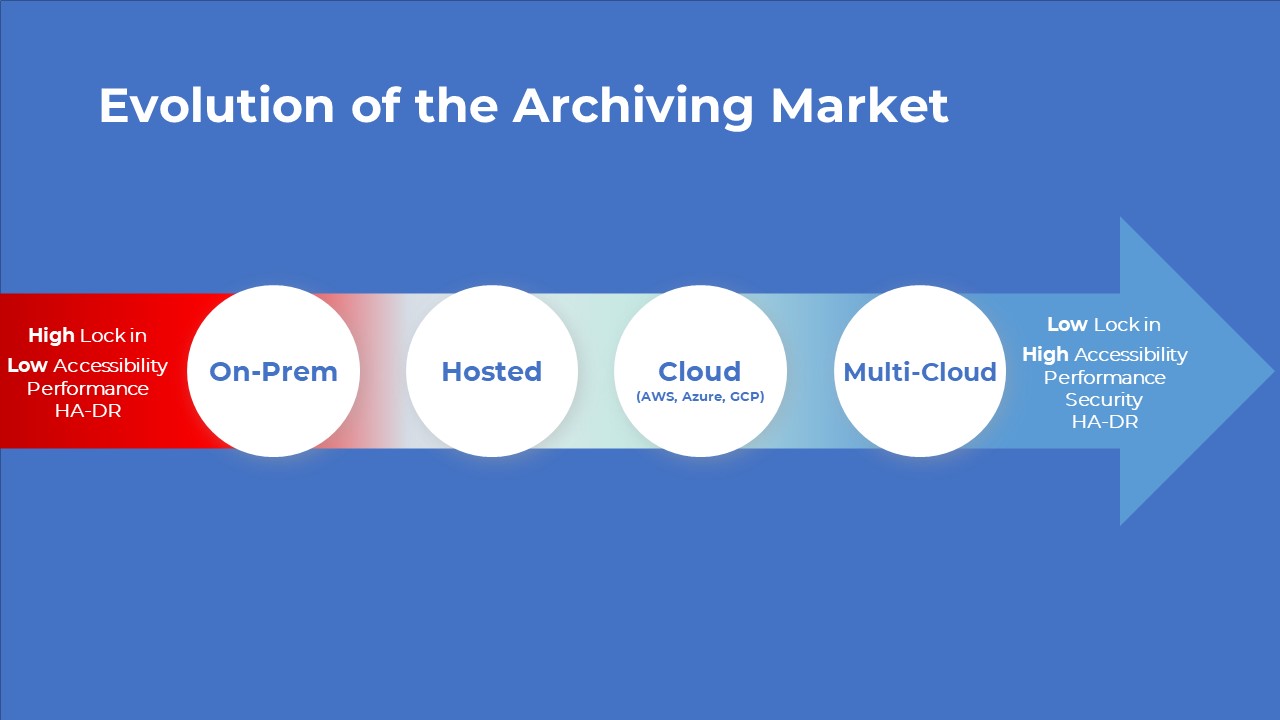
To begin the conversation, Cheryl and Robert agreed that the trend to move archived data to public cloud and multi-cloud are well on their way. The on-premise and hosted storage days are becoming a thing of the past for companies even in security-conscious industries like financial services. In fact, according to Cheryl, 60% of these companies have already adopted cloud solutions, in the last few years. “We can now declare this generational war to be won.”
What’s driven the move to a new generation of data archiving is a new generation of employees and clients and their preferred modes of speedy, mobile interaction. Robert references a chart from Microsoft. “If you look at some of the emerging sources, it’s really about driving the interactivity. It’s driving the immediacy of the communication—engaging with me on my terms.” Companies should be considering the business impact of supporting these new networks.
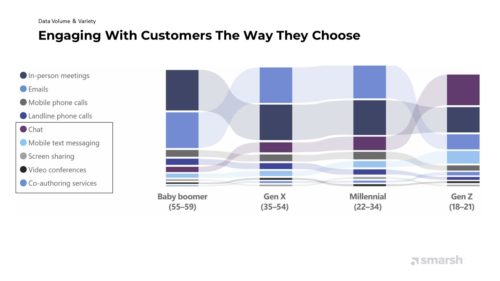
Data Volume, Variety, and Value
As companies move critical enterprise applications (CRM, analytics) and next-gen collaboration and messaging tools (Microsoft Teams, Slack) to the cloud, they expand the volume and variety of communications data under scrutiny by regulators. Simultaneously, they are collecting business intelligence. Rather than just a compliance obligation, Robert notes, companies can look at this as an opportunity to improve their business.
“There’s a lot of untapped value sitting [within] our communications, [specifically] in the content and collaborative information that we are capturing and archiving,” Cheryl said. “Now we have the opportunity of doing more analysis around it and looking at better ways of serving our customers in the way that we communicate with them.”
Cheryl caveats that these opportunities don’t come without their challenges. Moving business-critical applications to the cloud and streamlining processes requires the input of additional internal stakeholders. That expansion of involvement can result in fragmentation when applied to data governance and security policies, making a centralized knowledge base even more critical.
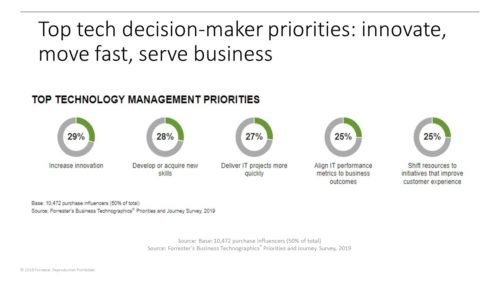
Innovation and Customer Experience
Forrester’s 2019 Business Technographics Priorities and Journeys Survey, completed by over 10,000 technology purchase influencers, highlights buyer priorities for 2020.
At the top of the list, Increase Innovation: technology decision makers want to increase their pace of innovation to be a step ahead and differentiate themselves in increasingly competitive business environments. Cheryl discussed the rest of the priorities as ways to strengthen skills and align internally, to ultimately position organizations as customer centric.
“This is again, I think, where cloud is really key—the ability to kind of get up and running and start solving those problems in a matter of hours or days, not months or even years as we’ve seen in decades past,” she said.
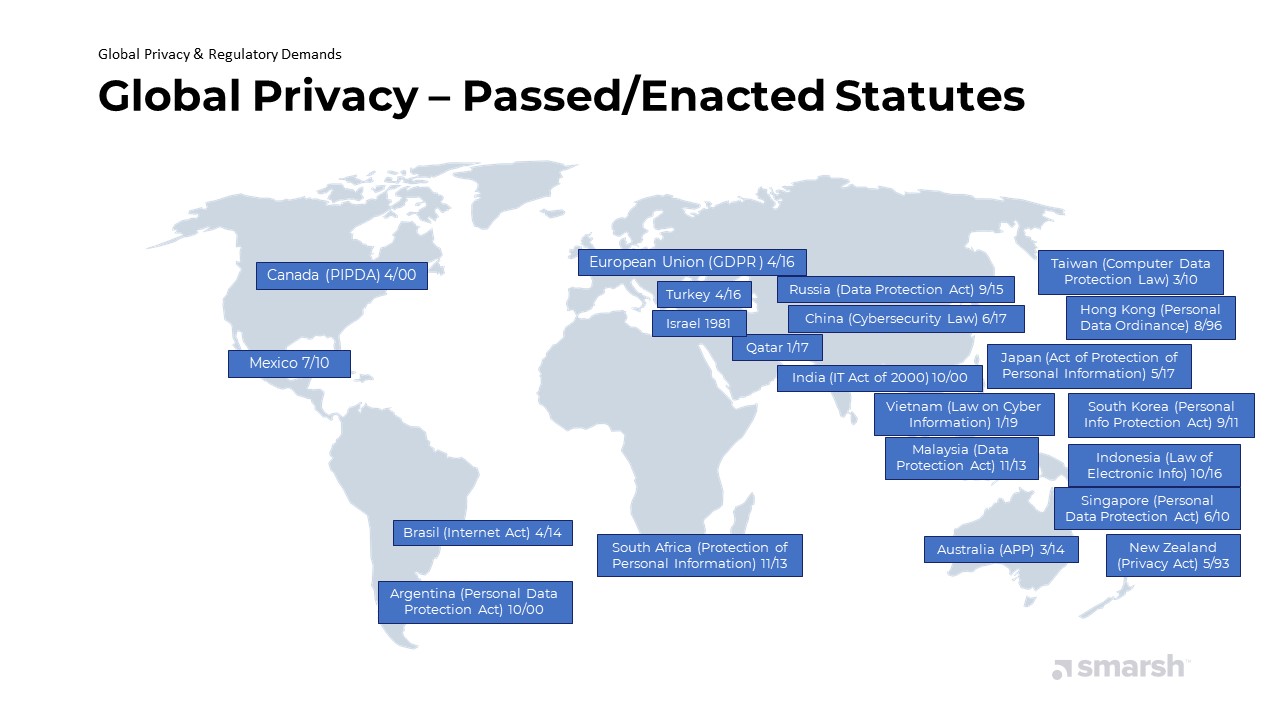
Global Regulatory & Privacy Demands
Robert asked Cheryl how companies are handling privacy laws. A growing consideration for global companies that archive communications data is the “complex patchwork” of privacy regulations and industry regulations that are evolving around the world.
Cheryl says the security risk team at Forrester diligently tracks these privacy regulations, and they’ve also developed a privacy heat map to report changes to keep impacted companies informed. She highlights the importance of technology. “This is where—as we think about the technology investments that we make to help us maintain and monitor this at scale—looking at tools that have flexibility is important.”
On the bright side, data protection and privacy regulations present opportunities as well, Cheryl notes. Organizations are having to step back and consider the perspective of customers and partners whose data they manage. By ensuring security and airtight retrieval and disposal processes—enabled through innovative, cloud-based technology—they have a chance to build stronger relationships with external stakeholders.
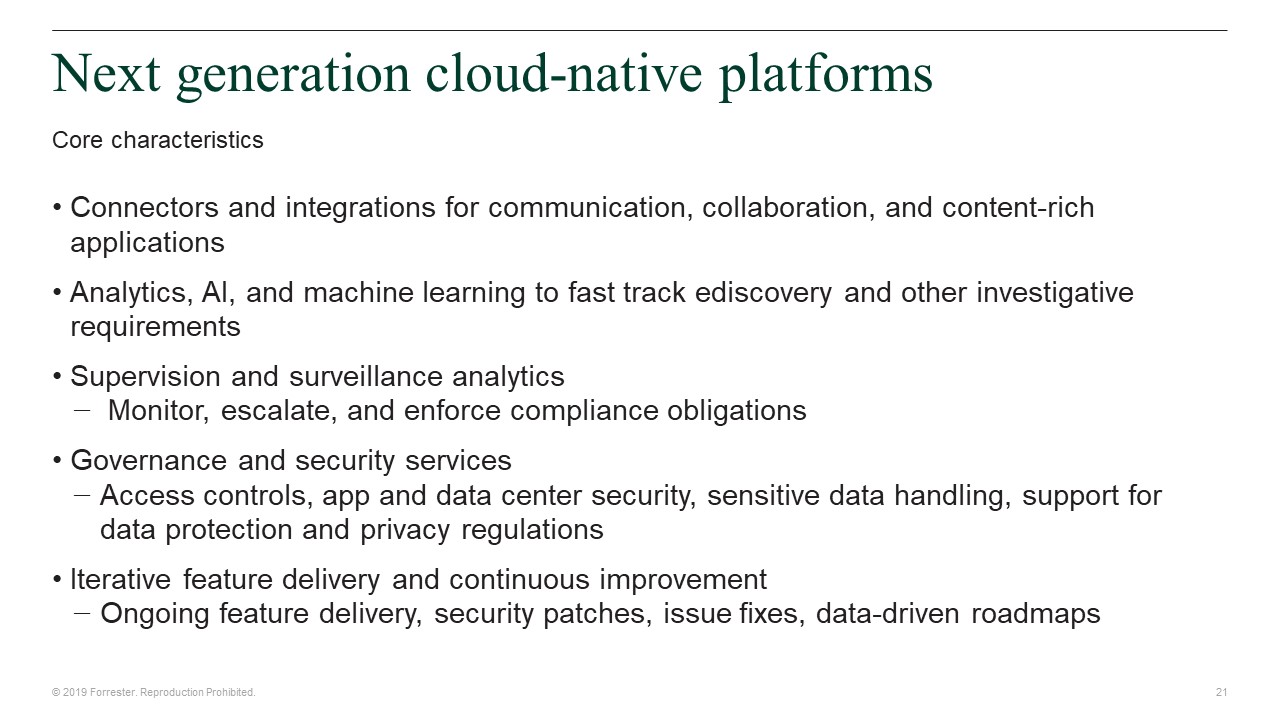
From Email to Enablement
Cheryl’s advice for companies is to plan for continuous improvement. “We perhaps have historically thought about things like compliance and information governance programs as being big and heavy,” she said, adding that companies need to “rethink that attitude and assume that these programs are always going to have to be evergreen—always shifting and moving as the type of information that we need to protect and preserve begins to change, and the stakeholders that we need to involve begin to change.”
Watch the webinar for the full conversation and Q&A with the audience.
For more information about Modern cloud infrastructures read Robert’s post Three Key Features for Today’s Smart Cloud Archive.
Learn more about Enterprise Archive here.
Share this post!
Smarsh Blog
Our internal subject matter experts and our network of external industry experts are featured with insights into the technology and industry trends that affect your electronic communications compliance initiatives. Sign up to benefit from their deep understanding, tips and best practices regarding how your company can manage compliance risk while unlocking the business value of your communications data.







Subscribe to the Smarsh Blog Digest
Subscribe to receive a monthly digest of articles exploring regulatory updates, news, trends and best practices in electronic communications capture and archiving.
Smarsh handles information you submit to Smarsh in accordance with its Privacy Policy. By clicking "submit", you consent to Smarsh processing your information and storing it in accordance with the Privacy Policy and agree to receive communications from Smarsh and its third-party partners regarding products and services that may be of interest to you. You may withdraw your consent at any time by emailing privacy@smarsh.com.
FOLLOW US